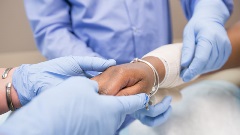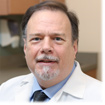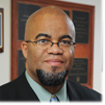Wound Care Can Apply to All Disciplines for Healing
 Successful patient outcomes often depend upon a multidisciplinary approach to care, and there may be no greater example of its importance than in the area of wound treatment.
Successful patient outcomes often depend upon a multidisciplinary approach to care, and there may be no greater example of its importance than in the area of wound treatment.
“If a patient has heart disease, you send them to a cardiologist. If they have cancer, you send them to a cancer center. So we hope that physicians will look on our services the same way,” said Gena Cornett, program director, Wound Care Center and Hyperbaric Services at Upper Valley Medical Center.
Premier Health offers a number of wound care services, and each one acts as a crucial resource for referring doctors and their patients. These services include the availability of surgical treatment options at Miami Valley Hospital and Good Samaritan Hospital (closed in 2018), as well medical options at the Wound Care and Hyperbaric Service Centers at Atrium Medical Center, Upper Valley Medical Center, and Miami Valley Hospital South.
Surgical treatment is heavily focused upon the repair and restoration efforts that will ultimately help save a patient’s limbs.
 “Our typical patient is acutely ischemic, infected, has significant soft-tissue envelope loss, bone infection, displaced fracture, and they're not a candidate for traditional care,” said Michael Regan, DPM, podiatric surgeon at the Wound Care Center at Good Samaritan Hospital. “We admit them, take them to surgery, and convert them from an infected wound to a clean wound.”
“Our typical patient is acutely ischemic, infected, has significant soft-tissue envelope loss, bone infection, displaced fracture, and they're not a candidate for traditional care,” said Michael Regan, DPM, podiatric surgeon at the Wound Care Center at Good Samaritan Hospital. “We admit them, take them to surgery, and convert them from an infected wound to a clean wound.”
Premier Health’s additional wound care centers use evidence-based protocols to treat a number of chronic wounds, including diabetic ulcers, neuropathic ulcers, pressure ulcers, venous ulcers, surgical wounds, burns, soft tissue radionecrosis, osteoradionecrosis, osteomyelitis, skin grafts, and flaps. Specialists use a number of techniques, and each has the ability to utilize the hyperbaric chamber therapy to help speed healing.
“We feel the most important part of the patient's wound team is the referring physician,” said Chrissy Skinner, program director, Wound Care Center and Hyperbaric Services at Atrium Medical Center. “So we include physician specialists and specially trained nurses in our care approach, and when the wound patient meets with our staff we will communicate with the primary care provider or other referring physician to communicate the treatment plan and follow up with that physician.”
Communication is key between the wound centers and referring physicians, since a patient’s background and treatment history allow specialists to develop a more effective treatment plan when a wound isn’t responding to treatment as it should.
 “We see a variety of wounds that (include) complex wounds that primary care physicians have been unsuccessful at healing,” said Travis L. Perry, MD, medical director, Miami Valley Hospital Regional Burn Center. Successful outcomes are also strongly dependent on timing and a clear understanding of the severe risks that can come from delayed treatment.
“We see a variety of wounds that (include) complex wounds that primary care physicians have been unsuccessful at healing,” said Travis L. Perry, MD, medical director, Miami Valley Hospital Regional Burn Center. Successful outcomes are also strongly dependent on timing and a clear understanding of the severe risks that can come from delayed treatment.
“It’s important to understand that if a wound hasn’t healed on its own within three to four weeks, then it’s not going to heal without intervention,” said Leah Barton, clinical nurse manager, Wound Care Center and Hyperbaric Services at Miami Valley Hospital South.
Without proper care, an unhealed wound not only harms a patient’s quality of life. Infection puts them at an even greater risk of losing a limb, which can deal a blow to their ongoing health and length of life.
“The five year survival rate for patients who lose their limbs is absolutely horrible and is actually worse than most cancer patients,” said Dr. Regan. “Primary care doctors play an important role by referring their patients to us as quickly as possible. To put it simply, if you save a limb, you save a life.”
Back to the September 2017 issue of Premier Pulse

